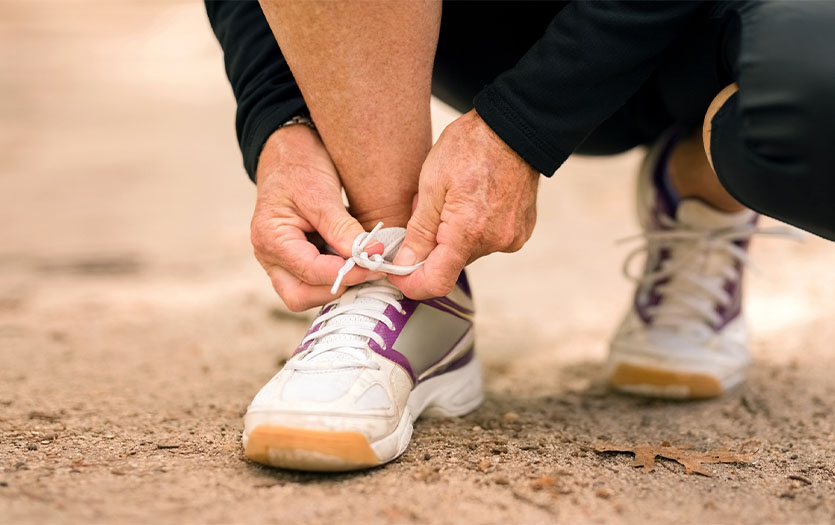
This post was written by Ashley M. Bojrab, DPM, FACFAS, ABPM, CWS, PPG – Podiatry.
Just like the tires on a car need to be replaced periodically to prevent damage to the vehicle, our shoes need to be swapped to prevent injury. This is especially true for running and everyday shoes, which are most used and provide support and stability. These should be replaced a least twice a year, depending on how often you wear them. So, how do you know when it’s time for a fresh pair? Let’s talk about it.
Listen to your body
If you notice that your feet are painful and achy at the end of the day, it might be a sign that your shoe gear is wearing down. Ask yourself when you last replaced them. Generally, running shoes have a lifespan of 500 miles (or 1,143,200 steps), which is 3-4 months for an average person.
Inspect the soles
Similar to how a car technician would examine a car’s tire tread, you should regularly examine the soles of your shoes. If there is a significant wear point or uneven wear, then the biomechanics of the shoe have been altered which could cause foot, ankle, knee or hip pain.
Look inside of the shoe
Here, you would be looking at areas of wear that have caused depressions within the sole or sock liner. Over time, the foam can break down, and holes can develop. It is a good idea to pull the sock liner out and inspect the cushion layer. This includes inspecting the heel for wear through the fabric and hole. Also, this is a great opportunity to remove any debris and help reduce odor by washing or sanitizing the cushion.
Fit matters
Don’t assume you know the type of shoe you need, particularly if you are new to running or an activity. Proper fit and support are key differentiators for happy, healthy feet.
To make sure you are fitted correctly, it is important to pay attention to any areas of rubbing or pain. Patients with neuropathy or loss of sensation have a more challenging time feeling, so a visual examination after wearing the shoes is helpful. If you notice blisters, hot spots or pain, this likely isn’t the right shoe for you. You also want to avoid styles that result in abnormal bulges in the toe box or excessive heel slippage. You should be able to wiggle your toes comfortably in the toe box.
Shoes are more than a fashion statement. They can be the difference between a happy day and a painful one. Listening to your body and letting the warning signs guide you are the best ways to stay comfortable and supported.
If you are unsure how to pick the right shoes for your foot shape, condition or activity, your podiatrist is a great resource. Ask your questions so you can get moving without unwanted side effects.



